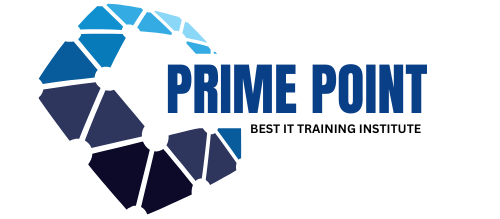
Businesses use data analytics to make decisions in their competitive market environment today. Organizations accumulate large data sets which stay underused when they lack proper analysis and visualization methods. Tableau serves as an industry-leading business intelligence solution that enables professionals to change raw data records into interactive dashboard presentations along with important observational findings. It is a popular platform for both business organizations and their data analysts and scientists who need to investigate data and discover patterns while creating easy-to-grasp visual presentations. The following blog examines Tableau through its role in data analytics together with its main features, including real-life applications and concrete examples.
Tableau provides users with a platform to achieve multiple functions, such as connecting to multiple data sources, cleaning and manipulating data, creating interactive visualizations and dashboards, and performing real-time data analysis. Users can distribute insights between different teams along with organizations through this solution. The finance sector, healthcare industry, retail, and manufacturing make use of Tableau to reach data-driven solutions. This feature enables the platform to establish links with multiple data systems that encompass databases, cloud-computing tools, and spreadsheet applications. The tool Tableau Prep enables data preparation functions to clean data and establish proper structures. Users can make charts, dashboards, and graphs with the help of intuitive drag-and-drop functions. The system provides statistical and predictive analytics features. The sharing features of Tableau include the capabilities to distribute dashboards through Tableau Server and Tableau Public platforms.
One of the biggest advantages of Tableau is its simple design principles. The platform includes basic drag commands, which let users build charts with no programming expertise required. Business staff members in marketing departments routinely put together analysis reports of customer groups with no database code needed. Through its multiple data links, Tableau reads content from basic spreadsheets, company databases, website traffic tools, and online storage systems. For instance, bank employees merge records from different accounts to see patterns in money flows. On the display side, users select from assorted visual formats to show their findings with graphs and maps. As an example, store supervisors build color-coded regional maps to understand where products sell best.
The system receives new information as it arrives, so companies track their numbers in real time. This allows supply chain teams to spot delays by watching current stock levels at warehouses. The statistics tools in Tableau come with mathematical formulas that connect to programming environments such as Python and R. For instance, data analysts input numbers into Tableau to estimate how many buyers will leave in upcoming months. Users give access to their data displays through three platforms: Tableau Server, Tableau Cloud, or Tableau Public. As an example, business leaders check sales numbers on their phones at any time during the day.
Tableau Prep assists in cleaning and preparing data before visualization, for instance, merging multiple Excel sheets into a single dataset. Tableau Desktop enables users to create reports and dashboards, such as designing an interactive sales performance dashboard. Tableau Server and Tableau Cloud facilitate sharing and collaboration on dashboards, like a sales team accessing a shared dashboard to track monthly targets. Tableau Public is a free version for publishing dashboards online, as seen with a researcher publishing COVID-19 case trends for public viewing. Data blending and joins combine data from multiple sources into a single view, such as merging customer purchase data with website traffic analytics. Advanced analytics with R and Python integration allow for deeper statistical and machine learning analysis, for example, running sentiment analysis on social media comments.
A company may want to analyze customer retention and churn rates, and Tableau can automate and visualize insights instead of manually aggregating data. The following steps can be taken to build a customer retention dashboard in Tableau. First, import customer transaction data from a SQL database as the data source. Then, use Tableau Prep to clean data by removing duplicate records and standardizing dates. Create visuals such as a line chart to track monthly customer retention trends, a bar chart to compare churn rates by customer segments, and KPI indicators for retention rate and average customer lifetime value. Apply calculated fields to calculate the retention rate using the formula COUNTD(Customers Retained) / COUNTD(Customers Total) and compute the average revenue per customer using SUM(Revenue) / COUNTD(Customers). Finally, publish and share the dashboard by uploading it to Tableau Server for company-wide access. By using this dashboard, the marketing team can identify factors influencing customer retention and make necessary adjustments.
Although Tableau is a robust software, it does have several drawbacks. Price can be a concern for small companies due to the high cost of Tableau licenses. Users need to have an understanding of data blending and calculated fields to perform advanced analytics. Dashboard performance may be affected when working with extensive datasets. Limited customization options may require users to utilize other tools like Python or R for more intricate analysis. Proper access control and security measures should be implemented to address data security issues.
Tableau is a prominent tool in the field of data analytics, allowing companies to convert unprocessed data into useful information. Its user-friendly design, strong visualization tools, and advanced analytical functions improve decision-making in various sectors. Whether you are a business analyst, data specialist, or a top executive, becoming proficient in Tableau can enhance your data analysis abilities and boost business outcomes. Take advantage of Tableau now to fully utilize the potential of your data!










